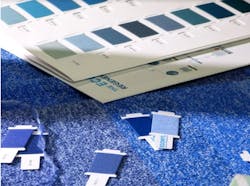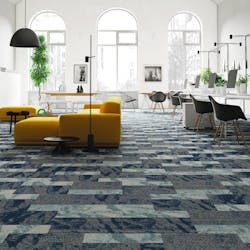How legislation and good design can increase recycling in the industry
According to the U.S. Environmental Protection Agency, carpet waste represents up to 3 percent of the material that fills American landfills. That translates to 4 billion pounds of carpet that ends up as waste in the U.S. every year. And once it’s there, it can take hundreds of years to degrade, placing a heavy burden on our planet and on future generations.
Our attitude toward carpet recycling represents our current “take, make, waste” model and the dangerous consequences it has. It’s essential to the health of our planet that we embrace sustainable practices — both in design and in our recycling habits — in an effort to move toward a circular economy.
That’s why Aquafil is dedicated to making the carpet recycling process more convenient and to creating sustainable materials that are easier to recycle at the end of life. To achieve these goals, Aquafil has opened two carpet recycling centers, one in Phoenix, Arizona, and one in Woodland, California, that can each process up to 36 million pounds of carpet annually. These facilities disassemble carpets into the main components, and from there, Aquafil can recover the nylon 6 and regenerate it for new yarn used in flooring, fashion and design.
That new yarn, ECONYL®, which is also made from waste from other waste (fishing nets and textile scraps), has the same properties as virgin nylon but with significantly less environmental impact. In fact, ECONYL® reduces the global warming impact of nylon by up to 90 percent compared with the material from oil. It can be recycled, recreated and remolded again and again, closing the loop.
But there’s more to be done. There are further steps that can, and should, be taken to make the recycling process easier and more efficient — starting with better legislation to pave the way.
The powerful role of legislation
In recent years, California has been able to divert more than 435 million pounds of carpet waste from its landfills. And whereas in the rest of the nation,the average carpet recycling rate is about 1 percent, California is at 20 percent. How has the state done it? By leading the way through innovative legislation and incentive programs.
In fact, in 2010, California became the first state to pass legislation focused on increasing carpet recycling. And through the Carpet America Recovery Effort (CARE), there is an assessment fee of 35 cents per square yard on all carpet sold or shipped in the state. The money collected goes into a fund that supports a variety of things, including grant funding, ongoing subsidies to carpet recyclers and processors, and growing the carpet public drop-off site program.
Today, the drop-off program features more than 80 public sites in California, all of which accept carpet free of charge, as well as 160-plus private collection sites — in 2019, these sites, collected 82 million pounds of carpet.
Planning for the future
Better legislation can drive better practices when it comes to carpet recycling, making it easier to divert waste from landfills. But we must also think about the materials being used in building and design.
According to Lance Hosey, FAIA, LEED Fellow and Design Resilience director for Gensler, studies show thatdesigners and architects can impact up to 90 percent of a project’s eventual impact based on the earliest design decisions. Because carpet has a lifespan of about 5 to 8 years, we must start thinking now about how we can redesign it to make it more easily recyclable in the future.
When we design with the end in mind — by focusing on the entire lifecycle of a project — we can make smarter, more sustainable decisions. This includes using materials that are more easily recyclable and have less of an impact on our environment, like ECONYL® regenerated nylon. Brands including Milliken, Delos, Mannington, Masland, ege and Venture are using ECONYL® yarn to make more sustainable carpets that are both high-performance and beautiful.
Today’s architects and designers have an exciting opportunity to redesign the world around us, creating something less wasteful and more regenerative. Learn more about the beautiful carpets being made with ECONYL® here.


